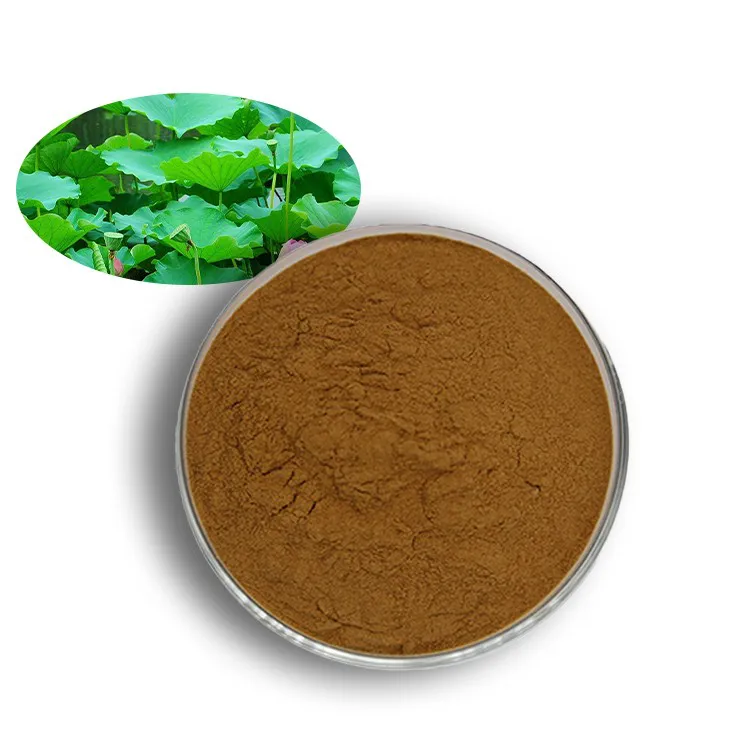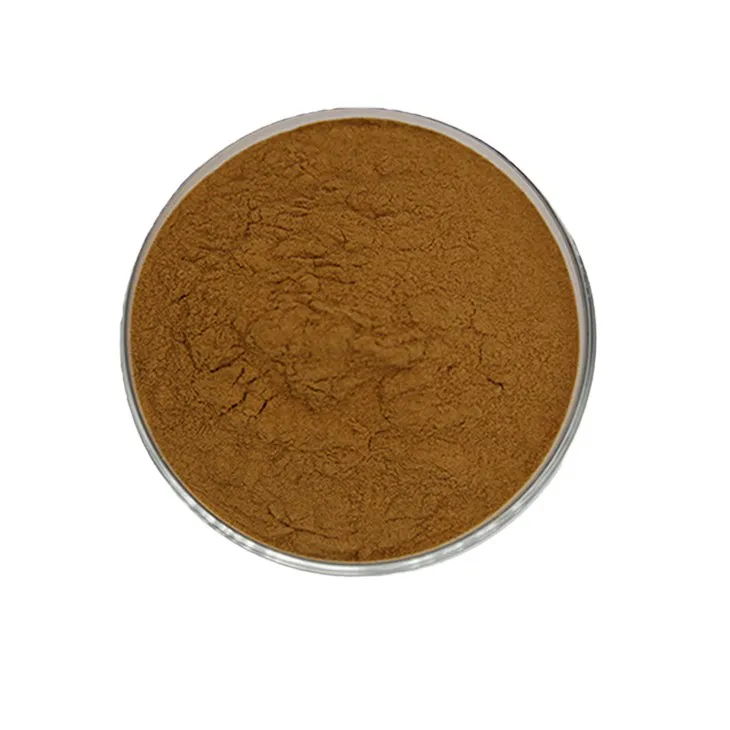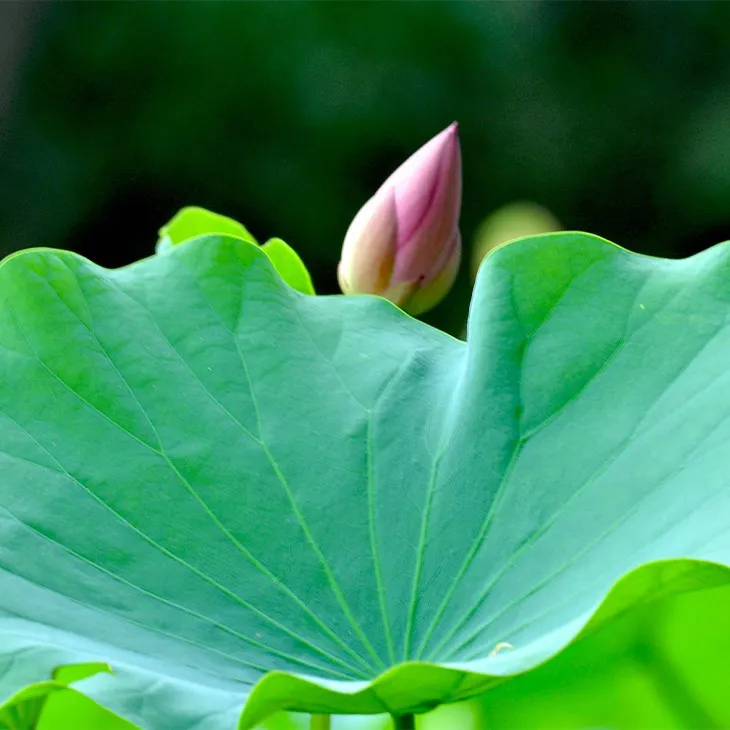- 0086-571-85302990
- sales@greenskybio.com
Lotus Leaf Extract: From the Leaf to the Extraction.
2024-11-13

1. Introduction to the Lotus Leaf
The lotus leaf is a fascinating natural element that has been an object of interest for centuries. It is native to many regions across Asia, including countries like India and China. The lotus plant itself is often regarded as a symbol of purity and beauty in various cultures.
The lotus leaf has several distinct characteristics. It is a large, flat, and circular leaf with a waxy surface. This waxy coating gives it a hydrophobic property, meaning it repels water. This unique feature has inspired scientists and engineers in fields such as biomimicry. The leaf also has a network of veins that help in the transportation of nutrients and water within the leaf.

2. Reasons for Extracting from the Lotus Leaf
There are numerous reasons why the extraction of substances from the lotus leaf is of great importance.
2.1 In Traditional Medicine
In traditional medicine systems like Ayurveda in India and Traditional Chinese Medicine (TCM), the lotus leaf has been used for centuries for its medicinal properties. It is believed to have properties that can help in digestion, reducing inflammation, and even in some cases, for treating certain types of fevers.
2.2 In the Cosmetics Industry
The hydrophobic nature of the lotus leaf has led to its use in the cosmetics industry. Extracts from the lotus leaf can be added to skincare products to provide a smooth and water - repellent finish on the skin. This can be beneficial for products like moisturizers and sunscreens, as it can help the product stay on the skin for a longer period.
2.3 In the Food Industry
There is also potential for the use of Lotus leaf extracts in the food industry. Some studies suggest that certain compounds in the lotus leaf may have antioxidant properties. These could be used as natural preservatives in food products, replacing some of the synthetic preservatives currently in use.

3. Extraction Procedures
The extraction of substances from the lotus leaf is a multi - step process, and different methods can be used depending on the desired compounds and the end - use of the extract.
3.1 Maceration
Maceration is one of the simplest and oldest methods of extraction. In this process:
- The lotus leaves are first collected and cleaned thoroughly to remove any dirt, debris, or contaminants.
- The clean leaves are then cut into small pieces to increase the surface area available for extraction.
- The leaf pieces are placed in a suitable solvent, such as ethanol or water. Ethanol is often preferred as it can dissolve a wide range of organic compounds. The solvent and the leaf pieces are left in a sealed container for a period of time, usually several days to weeks. During this time, the solvent penetrates the leaf tissue and dissolves the desired compounds.
- After the maceration period, the mixture is filtered to separate the liquid extract from the solid leaf residue. The resulting liquid is the crude Lotus leaf extract, which may contain a mixture of different compounds.
3.2 Soxhlet Extraction
The Soxhlet extraction method is a more advanced and efficient way of obtaining Lotus leaf extracts:
- The lotus leaf sample is prepared in a similar way as in maceration, by cleaning and cutting into small pieces.
- The sample is placed in a Soxhlet thimble, which is then inserted into a Soxhlet apparatus. The apparatus consists of a flask containing the solvent (again, often ethanol or a mixture of solvents), a condenser, and a siphon mechanism.
- The solvent is heated in the flask, and it vaporizes. The vapor rises through the condenser, where it is cooled back into a liquid state. The liquid solvent then drips onto the lotus leaf sample in the thimble.
- As the solvent accumulates in the thimble, it reaches a certain level where it is siphoned back into the flask. This cycle of solvent evaporation, condensation, and siphoning back continues for a set number of times, usually several hours to days.
- Finally, the solvent in the flask, which now contains the dissolved lotus leaf compounds, is evaporated to obtain the concentrated extract.
3.3 Supercritical Fluid Extraction
Supercritical fluid extraction is a relatively new and advanced technique for lotus leaf extraction:
- In this method, a supercritical fluid, most commonly carbon dioxide (CO₂), is used as the extraction solvent. Carbon dioxide is preferred because it is non - toxic, non - flammable, and can be easily removed from the extract after the extraction process.
- The CO₂ is brought to its supercritical state by applying specific temperature and pressure conditions. In the supercritical state, CO₂ has properties that are intermediate between a gas and a liquid, allowing it to penetrate the lotus leaf tissue effectively and dissolve the target compounds.
- The lotus leaf sample is placed in an extraction vessel, and the supercritical CO₂ is passed through it. The dissolved compounds are then separated from the CO₂ by reducing the pressure, which causes the CO₂ to return to its gaseous state, leaving behind the extract.

4. Quality Control and Analysis of the Extracts
Once the lotus leaf extracts are obtained, it is crucial to ensure their quality through various analysis and control methods.
4.1 Chemical Analysis
Chemical analysis techniques are used to determine the composition of the extract. Some of the common methods include:
- High - Performance Liquid Chromatography (HPLC): This method is used to separate, identify, and quantify the different compounds present in the extract. It is based on the differential movement of compounds through a column filled with a stationary phase and a mobile phase. By comparing the retention times of the peaks in the chromatogram with known standards, the identity and quantity of the compounds can be determined.
- Gas Chromatography - Mass Spectrometry (GC - MS): This technique is particularly useful for analyzing volatile compounds in the extract. The sample is first vaporized and then separated by gas chromatography. The separated compounds are then ionized and analyzed by mass spectrometry to determine their molecular weights and structures.
4.2 Microbiological Testing
Microbiological testing is essential to ensure that the extract is free from harmful microorganisms. This includes testing for:
- Total viable count of bacteria, fungi, and yeasts. Samples of the extract are plated on suitable growth media, and the number of colonies that grow after incubation is counted to determine the microbial load.
- Testing for specific pathogens such as Escherichia coli, Salmonella, and Staphylococcus aureus. These are common pathogenic bacteria that can cause serious health problems if present in the extract.
4.3 Physical Properties Analysis
The physical properties of the extract, such as its color, odor, and viscosity, are also important factors in quality control. These properties can give an indication of the purity and consistency of the extract.

5. Applications of Lotus Leaf Extracts
Lotus leaf extracts have a wide range of applications in different industries, as mentioned earlier. Here, we will explore these applications in more detail.
5.1 In Herbal Remedies
As part of herbal remedies, lotus leaf extracts are used in various forms. For example:
- Teas: Dried lotus leaf extracts can be made into teas. These teas are believed to have a calming effect on the digestive system and may help in relieving indigestion and bloating. The preparation of lotus leaf tea usually involves steeping the dried extract in hot water for a few minutes.
- Tinctures: Tinctures are alcohol - based extracts of the lotus leaf. They are often used in traditional medicine for their concentrated medicinal properties. Tinctures can be taken orally, usually a few drops at a time, and are believed to be more potent than teas.
5.2 In Cosmetics
In the cosmetics industry, lotus leaf extracts are incorporated into different products:
- Skincare products: As mentioned earlier, lotus leaf extracts can be added to moisturizers, creams, and lotions. They can help improve the texture of the skin, making it smoother and more supple. The hydrophobic properties of the extract can also help in creating a protective barrier on the skin, preventing moisture loss.
- Haircare products: Lotus leaf extracts can also be used in haircare products. For example, they can be added to shampoos and conditioners to add shine and manageability to the hair. The antioxidant properties of the extract may also help in protecting the hair from environmental damage.
5.3 In the Food Industry
In the food industry, the potential applications of lotus leaf extracts are still being explored:
- Natural preservatives: As mentioned, the antioxidant properties of lotus leaf extracts can be utilized as natural preservatives. They can help prevent the oxidation of fats and oils in food products, thereby extending their shelf life.
- Functional foods: There is also the possibility of developing functional foods containing lotus leaf extracts. These could be foods that not only provide basic nutrition but also have additional health benefits due to the presence of the extract.
6. Future Prospects
The study and use of lotus leaf extracts are still in the growing phase, and there are several promising future prospects.
Research is ongoing to identify and isolate more specific compounds from the lotus leaf extract that could have even greater medicinal or industrial applications. For example, there may be compounds in the extract that could be developed into new drugs for treating chronic diseases.
In the cosmetics industry, new formulations and product concepts could be developed based on the unique properties of lotus leaf extracts. This could lead to the creation of more effective and innovative skincare and haircare products.
In the food industry, as consumer demand for natural and healthy products continues to grow, lotus leaf extracts could play an increasingly important role as natural additives and preservatives.
FAQ:
What are the main characteristics of lotus leaves?
Lotus leaves are typically large, flat, and circular in shape. They have a waxy surface which gives them a water - repellent property known as superhydrophobicity. This unique feature allows water droplets to bead up and roll off the leaf easily, carrying away dirt and debris. The color of lotus leaves is usually a vibrant green, which is due to the presence of chlorophyll for photosynthesis. They also have a network of veins that help in transporting water, nutrients, and sugars throughout the leaf.
Why are lotus leaves chosen for extraction?
Lotus leaves are chosen for extraction because they contain various bioactive compounds. These compounds have potential beneficial properties. For example, they may have antioxidant, anti - inflammatory, and antimicrobial activities. Their natural origin also makes them attractive for use in products where consumers prefer natural ingredients, such as in herbal remedies, cosmetics, and food supplements.
What are the common extraction methods for lotus leaf extract?
One common method is maceration, where the lotus leaves are soaked in a solvent (such as ethanol or water) for a period of time to allow the extraction of soluble compounds. Another method is Soxhlet extraction, which is a more continuous extraction process using a refluxing solvent. Supercritical fluid extraction is also emerging as an advanced technique, often using carbon dioxide as the supercritical fluid. This method can be more selective and can produce high - quality extracts with better preservation of bioactive components.
What are the applications of lotus leaf extract in traditional medicine?
In traditional medicine, lotus leaf extract has been used for various purposes. It may be used to treat digestive problems, as it is believed to have properties that can help with digestion and relieve symptoms like indigestion. It has also been used for its potential diuretic effects, which can help in regulating fluid balance in the body. Additionally, some traditional uses include treating certain skin conditions due to its anti - inflammatory properties.
How does lotus leaf extract contribute to the development of natural cosmetics?
Lotus leaf extract can contribute to natural cosmetics in multiple ways. Its antioxidant properties can help protect the skin from free radical damage, which is associated with aging. The anti - inflammatory properties can soothe irritated skin and reduce redness. It can also be used in formulations for its moisturizing effects, as it may help the skin retain moisture. Additionally, its natural origin makes it a desirable ingredient for consumers who prefer natural - based cosmetic products.
Related literature
- Bioactive Compounds in Lotus Leaves and Their Potential Health Benefits"
- "Advanced Extraction Technologies for Lotus Leaf Extracts"
- "Lotus Leaf Extract in Traditional and Modern Medicine"
- ▶ Hesperidin
- ▶ citrus bioflavonoids
- ▶ plant extract
- ▶ lycopene
- ▶ Diosmin
- ▶ Grape seed extract
- ▶ Sea buckthorn Juice Powder
- ▶ Beetroot powder
- ▶ Hops Extract
- ▶ Artichoke Extract
- ▶ Reishi mushroom extract
- ▶ Astaxanthin
- ▶ Green Tea Extract
- ▶ Curcumin Extract
- ▶ Horse Chestnut Extract
- ▶ Other Problems
- ▶ Boswellia Serrata Extract
- ▶ Resveratrol Extract
- ▶ Marigold Extract
- ▶ Grape Leaf Extract
- ▶ blog3
- ▶ blog4
- ▶ blog5
-
Organic Tongkat Ali extract powder factory.
2024-11-13
-
How to make powder with ashwagandha extract.
2024-11-13
-
Rosehip extract manufacturers from China.
2024-11-13
-
The best cat's claw extract in nature.
2024-11-13
-
Chinese Dandelion Leaf Extract Suppliers.
2024-11-13
-
Cocoa Extract
2024-11-13
-
Horse Chestnut Extract
2024-11-13
-
Chia Seed Powder
2024-11-13
-
Acai Berry Extract
2024-11-13
-
Bilberry Extract
2024-11-13
-
Curcuma Longa Extract
2024-11-13
-
Selenium yeast
2024-11-13
-
Ginseng Root Extract
2024-11-13
-
Green coffee bean Extract
2024-11-13
-
Cat Claw Extract
2024-11-13





















